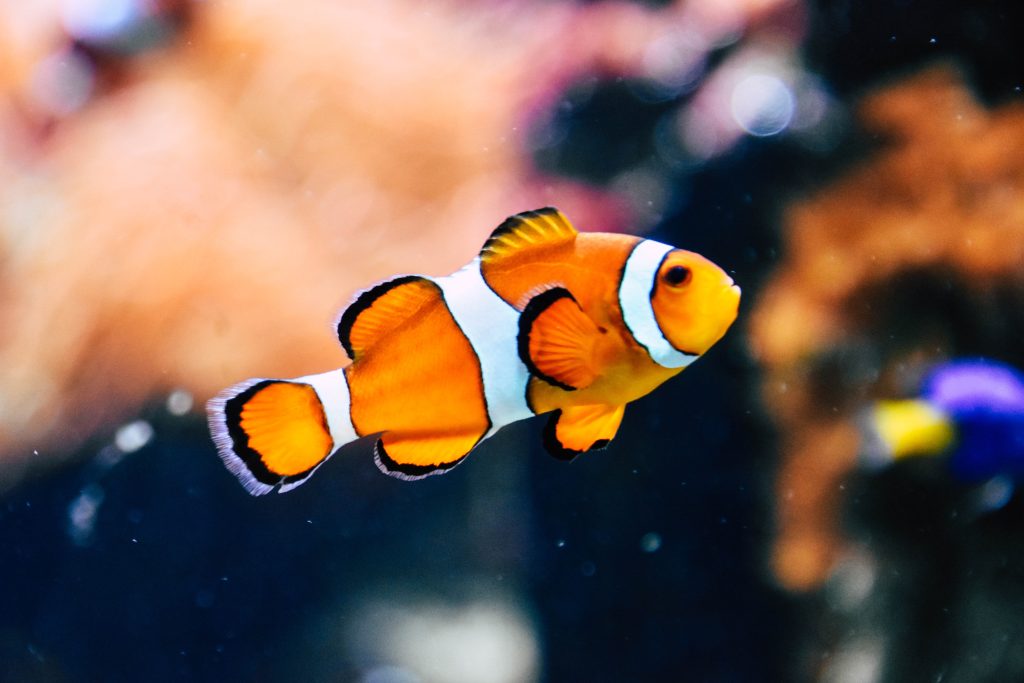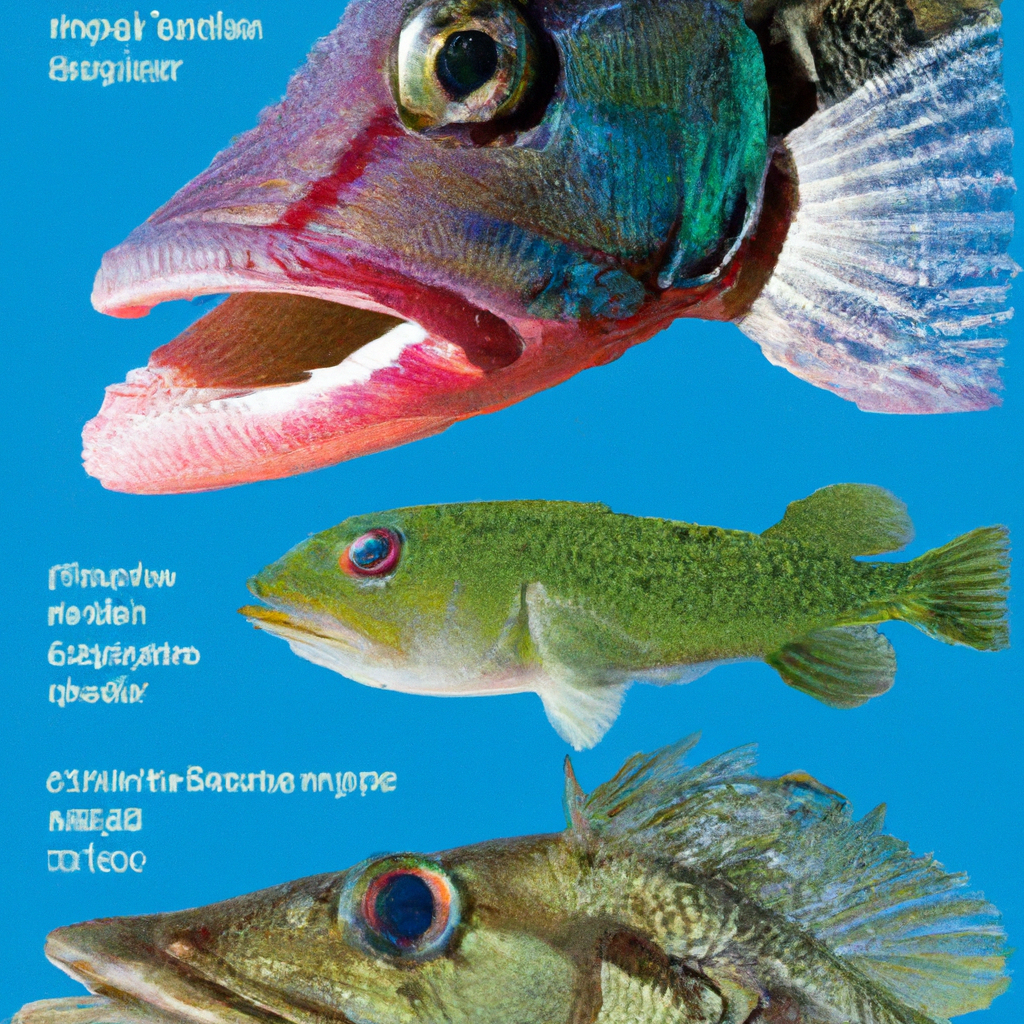Did you know that the mouths of fish can tell us a lot about their diets? It turns out that the shape of a fish’s mouth is closely linked to the type of food it eats. Whether it’s a wider mouth for consuming larger prey or a more narrow mouth for picking up tiny insects, these adaptations allow fish to thrive in their specific habitats and find the perfect meal. By examining the various mouth shapes of different fish species, scientists are able to gain valuable insights into their feeding behaviors and the ecology of their environments. So next time you’re out exploring the underwater world, take a moment to appreciate the fascinating diversity of fish mouths and the incredible adaptations they display.

Understanding Fish Anatomy and Feeding Mechanisms
Fish anatomy and feeding mechanisms are essential areas of study for understanding the ecological roles and behaviors of fish species. By examining their anatomy and feeding habits, researchers can gain valuable insights into their diets, adaptations, and even their habitats. This knowledge plays a crucial role in conservation efforts, species management, and understanding the intricate relationships between fishes and their environments.
Importance of studying fish anatomy
Studying fish anatomy provides a foundation for understanding their feeding mechanisms and behaviors. Fishes have a wide range of anatomical and morphological adaptations that allow them to capture prey, evade predators, and exploit various food sources. By understanding these adaptations, scientists can better comprehend how fishes fit into their ecosystems and how changes in their habitats may affect their survival. Additionally, the study of fish anatomy is crucial for differentiating between species and identifying their unique characteristics.
Diverse feeding mechanisms in fish
Fish present an incredible diversity of feeding mechanisms due to their ability to adapt to specific ecological niches. Some fishes are carnivorous, preying on other smaller organisms, while others are herbivorous, primarily consuming plant matter. There are also omnivorous species that feed on both plants and animals. These distinct feeding strategies have resulted in the evolution of various structural adaptations, including different mouth shapes, which play a significant role in capturing and processing food.
Role of mouth shape in feeding
The shape of a fish’s mouth is an important indicator of its feeding habits and diet. The mouth structure determines how a fish captures, manipulates, and consumes food items. Fishes have evolved a remarkable array of mouth shapes to match their dietary preferences and exploit available food sources. The morphology of the mouth affects a fish’s ability to gather and process food, making it a key feature in their feeding mechanisms.

Relation Between Fish Mouth Shapes and Diets
Types of fish mouth shapes
Fish mouth shapes can vary greatly and are often classified into distinct categories. One common mouth shape is the upturned mouth, where the lower jaw projects forward, creating an upward angle. Another type is the downward-directed mouth, characterized by a lower jaw that extends downward. Additionally, there is the forward-pointing mouth, where the jaws align to protrude directly forward. These mouth shapes are closely linked to the types of food a fish consumes and the feeding strategies it employs.
How mouth shapes dictate the diet of fish
The mouth shape of a fish is intricately linked to its diet. Different mouth shapes are specialized for different feeding strategies and food sources. For example, fishes with upturned mouths are often adapted to feed on surface-dwelling prey or insects found near the water’s surface. Their upward orientation enables them to easily capture food from the water’s surface and take advantage of unique food sources. In contrast, fishes with downward-directed mouths are typically bottom-feeders, using their mouths to scavenge food from the substrate or to sift through detritus.
Variations of diet among fish with similar mouth shapes
While mouth shape provides insight into a fish’s diet, it does not determine it entirely. Within each mouth shape category, there can be significant variations in diet preferences among different fish species. For instance, while many species with upturned mouths primarily feed on insects and small invertebrates, some may have specialized adaptations that allow them to consume larger prey such as small fish. This variation highlights the complexity of fish diets and the interplay between mouth shape and ecological niche.
Upturned Mouth Shape and Diets
Description of upturned mouth shape
Fish with an upturned mouth shape have a lower jaw that extends forward, creating an upward angle in relation to the upper jaw. This adaptation allows them to efficiently capture prey from the water’s surface. The upturned mouth shape is often associated with fish that feed on insects or other small organisms located near the surface of the water.
Typical diets of fish with upturned mouths
Fish with upturned mouths commonly feed on insects, flying insects, and small invertebrates that float on the water’s surface. These fishes employ various feeding strategies, such as “skimming,” where they glide along the water’s surface, using their upturned mouths to scoop up prey items. Some species with this mouth shape are known to engage in surface feeding behaviors, exploiting abundant insect populations.
Notable species with upturned mouth shape
One notable species with an upturned mouth shape is the archerfish (Toxotes spp.). Archerfishes have a remarkable ability to spit jets of water at insects perched on vegetation above the water’s surface, knocking them into the water and making them accessible for consumption. This unique feeding behavior, facilitated by their upturned mouths, is a defining characteristic of these fish. Other species with an upturned mouth shape include various species of halfbeaks (Hemiramphidae) and some surface-dwelling small fish species.

Downward-directed Mouth Shape and Diets
Description of downward-directed mouth shape
Fish with a downward-directed mouth have a lower jaw that extends downwards, creating a lower-facing mouth opening. This adaptation allows them to feed on prey items primarily located near the bottom of the water column or within the substrate.
Diet of fish with downward-directed mouths
Fishes with downward-directed mouths are often categorized as bottom-feeders or benthic feeders. They primarily consume food items found on the substrate or hidden within it, such as small invertebrates, crustaceans, worms, or decaying organic matter. These fish may use specialized mouth structures like barbels or elongated jaws to root around the substrate and capture prey efficiently.
Species with downward-directed mouth shape
The catfish family (Siluriformes) is an excellent example of fishes with a downward-directed mouth shape. Catfishes have well-developed barbels, which are sensory organs that assist in locating food in low-light or murky environments. Their downward-facing mouths and barbels enable them to scavenge for food on the bottom or sift through muddy substrates. Other species with a downward-directed mouth shape include gobies (Gobiidae) and blennies (Blenniidae).
Forward-pointing Mouth Shape and Diets
Description of forward-pointing mouth shape
Fishes with a forward-pointing mouth shape have jaws that extend straight forward, aligning vertically with each other. This mouth orientation is well-suited for capturing prey directly in front of the fish.
Typical diets of fish with forward-pointing mouths
Fish with forward-pointing mouths often consume prey in a straightforward manner. They typically feed on fast-moving prey, such as smaller fish or aquatic invertebrates, by quickly engulfing them using their powerful jaws. This mouth shape is advantageous for pursuing and capturing prey items efficiently, making these fishes effective predators in their ecosystems.
Species of fish with forward-pointing mouth
A prime example of a fish species with forward-pointing mouths is the Barracuda (Sphyraena spp.). Barracudas are fierce predators with elongated bodies and sharp teeth, perfectly designed to capture fast-swimming prey. They use their forward-pointing mouths to strike at their prey with remarkable precision and speed. Various species of pike (Esocidae) and some species of needlefish (Belonidae) also possess forward-pointing mouths that enable them to be effective predators.

Mouth Shape Variation Among Predatory Fish
Specific mouth shapes among predatory fish
Predatory fish exhibit a wide range of mouth shapes, reflecting their diverse feeding strategies. Some predatory fish have elongated, tubular mouths with sharp teeth, allowing them to engulf prey whole. Others have large, gaping mouths equipped with long teeth for capturing larger prey. The mouth shape of predatory fish is often adapted to their specific hunting techniques and the size and type of prey they target.
How mouth shapes facilitate predation
The mouth shape of predatory fish plays a vital role in capturing and subduing prey. An elongated, tubular mouth allows fish to create a strong suction force, drawing in and swallowing smaller prey items entirely. Conversely, a large, gaping mouth equipped with sharp teeth enables predatory fish to seize and hold onto larger prey, preventing escape. These mouth adaptations, in conjunction with other anatomical features like streamlined bodies or specialized jaw structures, aid in efficient hunting and successful predation.
Examples of predatory fish and their varied diets
The diversity of predatory fish mouth shapes is evident in iconic species such as sharks, which possess a large, triangular mouth filled with sharp teeth. Sharks are apex predators known for their ability to engulf prey whole or deliver powerful bites. Other examples include predatory species like the piranha (Serrasalmus spp.), known for their sharp teeth and powerful jaw muscles, which allow them to tear apart prey items. The mouth diversity among predatory fish reflects their specialization and adaptation to different hunting strategies and habitats.
Mouth Shape Variation Among Herbivorous Fish
Specific mouth shapes among herbivorous fish
Herbivorous fish display mouth shapes that are distinct from their carnivorous counterparts. Many herbivores have specialized mouths with teeth adapted for feeding on plant-based food sources. These structures are designed to scrape, tear, or crush plant matter efficiently. Additionally, herbivorous fish might have specialized adaptations such as modified gill structures or pharyngeal teeth that aid in processing and digesting plant material.
How mouth shapes facilitate plant-based feeding
Mouth shapes in herbivorous fish are adapted to the specific challenges of feeding on plant material. Some herbivores possess specially adapted jaws and dental structures, such as flattened or molar-like teeth, which allow them to grind and break down tough plant matter effectively. Others may have specialized lips or beak-like protrusions that aid in scraping algae from rocks or corals. These mouth adaptations enable herbivorous fish to extract nutrients from plant material and sustain themselves on a primarily vegetarian diet.
Examples of herbivorous fish and their varied diets
Herbivory is widespread among fish species, and many exhibit unique mouth shapes that facilitate their plant-based feeding habits. For instance, the parrotfish (Scaridae) family includes species with a beak-like mouth structure, which they use to scrape algae off coral surfaces. The surgeonfish family (Acanthuridae) has elongated mouths equipped with sharp, scalpel-like teeth that help them graze on marine algae. Some species of carp (Cyprinidae) have powerful pharyngeal teeth, enabling them to grind and digest vegetation. These examples demonstrate the various morphological adaptations among herbivorous fish, allowing them to exploit plant-based food sources.

Mouth Shape Adaptations in Omnivorous Fish
Adaptations in mouth shape among omnivorous fish
Omnivorous fish possess mouth shapes that provide flexibility in their feeding habits. Their mouths are often neither specialized for carnivory nor herbivory but offer a balance between the two. The aim is to capture and consume a diverse range of prey items, including both animals and plants. The mouth adaptations in omnivorous fish allow them to feed on a wide variety of food sources.
Relation between mouth shape and diverse diet in omnivorous fish
The mouth shape of omnivorous fish is adapted to accommodate their varied diets. These fish often have moderate-sized mouths with teeth that are suitable for capturing and processing both animal and plant-based food items. The versatility of their mouth structure enables them to exploit a broad range of available resources, maximizing their chances of finding sustenance in changing environments.
Examples of omnivorous fish and their diets
The common carp (Cyprinus carpio) is a classic example of an omnivorous fish. Carp possess a mouth shape that allows them to feed on a wide range of food items, including insects, crustaceans, detritus, and even plant material. This adaptability contributes to their success as a cosmopolitan and thriving fish species. Another example is the tilapia (Cichlidae) family, which comprises many omnivorous species that feed on invertebrates, algae, and detritus. These fish employ their versatile mouth structure to exploit diverse food sources found in their habitats.
Impact of Habitat on Fish Mouth Shape and Diet
Ocean habitat and mouth shape variations
The diverse habitats within the ocean present different challenges and food sources for fish, leading to variations in mouth shape and diet among marine species. Fishes living in coral reef ecosystems, for example, may have beak-like mouths to scrape algae off coral surfaces. In contrast, those inhabiting open water might possess streamlined bodies and mouths for capturing fast-swimming prey. The ocean’s vastness and varied environments provide ample opportunities for fish to adapt their mouth shapes to exploit specific ecological niches and available food resources.
Freshwater habitat and mouth shape variations
Freshwater habitats, such as rivers, lakes, and ponds, also exhibit a wide range of conditions that influence fish mouth shapes and diets. Fishes in river ecosystems may have mouths designed to capture drifting prey items, while those inhabiting lakes may possess mouth structures for efficiently feeding on benthic organisms. These variations reflect the unique challenges and opportunities presented by freshwater environments, highlighting the tight correlation between mouth shape, diet, and habitat specialization.
Impact of varying habitats on fish diets
The impact of habitat on fish diets is profound, as different environments offer distinct food sources. For example, marine habitats with abundant algae and small invertebrates often support herbivorous and omnivorous fish species. On the other hand, freshwater habitats provide a diverse array of prey items, including aquatic insects, small fish, and plant matter, which influences the mouth shape and diet preferences of resident fish species. Understanding these habitat-specific adaptations is crucial for managing fish populations and conserving the delicate balance of aquatic ecosystems.
Evolutionary Changes in Fish Mouth Shapes and Diets
Evolutionary trends in mouth shape and diet changes
Over evolutionary timescales, fish have undergone significant changes in mouth shape and diet adaptation. These changes are driven by shifts in environmental conditions, availability of food resources, and competition with other species. Evolutionary trends in fish mouth shape and diet changes demonstrate the remarkable capacity of fish to adapt and diversify to new ecological niches and exploit novel food sources.
Case studies of evolutionary changes
One well-documented example of evolutionary changes in fish mouth shape and diet is observed in the East African cichlid fish radiations. In this group, rapid speciation has resulted in the emergence of numerous species with diverse mouth morphologies and associated feeding strategies. This adaptive radiation has occurred in response to the availability of different food sources in the region’s varied habitats, resulting in a remarkable array of mouth shapes and dietary preferences among the cichlids.
Another notable case study involves the evolution of beak-like mouths in certain fish families, such as parrotfish (Scaridae) or wrasses (Labridae). This adaptation allows them to scrape algae or prey items from hard surfaces, such as corals or rocks. The evolution of specialized mouth structures in these fish reflects the exploitation of unique ecological niches and the acquisition of novel food sources during their evolutionary history.
Impact of evolutionary changes on current fish species and their diets
Evolutionary changes in fish mouth shape and diet have significant implications for the survival and success of current fish species. Through natural selection, fish have adapted to specific ecological niches, allowing them to exploit available food resources efficiently. However, ongoing environmental changes, such as habitat loss, pollution, or climate change, can disrupt these delicate ecological relationships. Altering the availability of specific food sources may impact fish populations, potentially leading to changes in their mouth shape or dietary preferences as they adapt to new circumstances. Studying these changes is critical for understanding the impact of human activities on fish species and implementing effective conservation strategies.
In summary, the study of fish anatomy and feeding mechanisms provides valuable insights into their diets, adaptations, and ecological roles. Mouth shape plays a fundamental role in fish feeding, reflecting their specific dietary preferences and the environments they inhabit. Whether it is an upturned mouth shape for surface feeding, a downward-directed mouth shape for bottom-feeding, or a forward-pointing mouth shape for predatory behaviors, each mouth structure has evolved to maximize a fish’s ability to acquire and process its preferred food sources. Understanding the correlation between mouth shape and diet allows scientists to unravel the complex web of interactions between fish species and their environment, aiding in conservation efforts and enhancing our understanding of the rich diversity of aquatic ecosystems.

